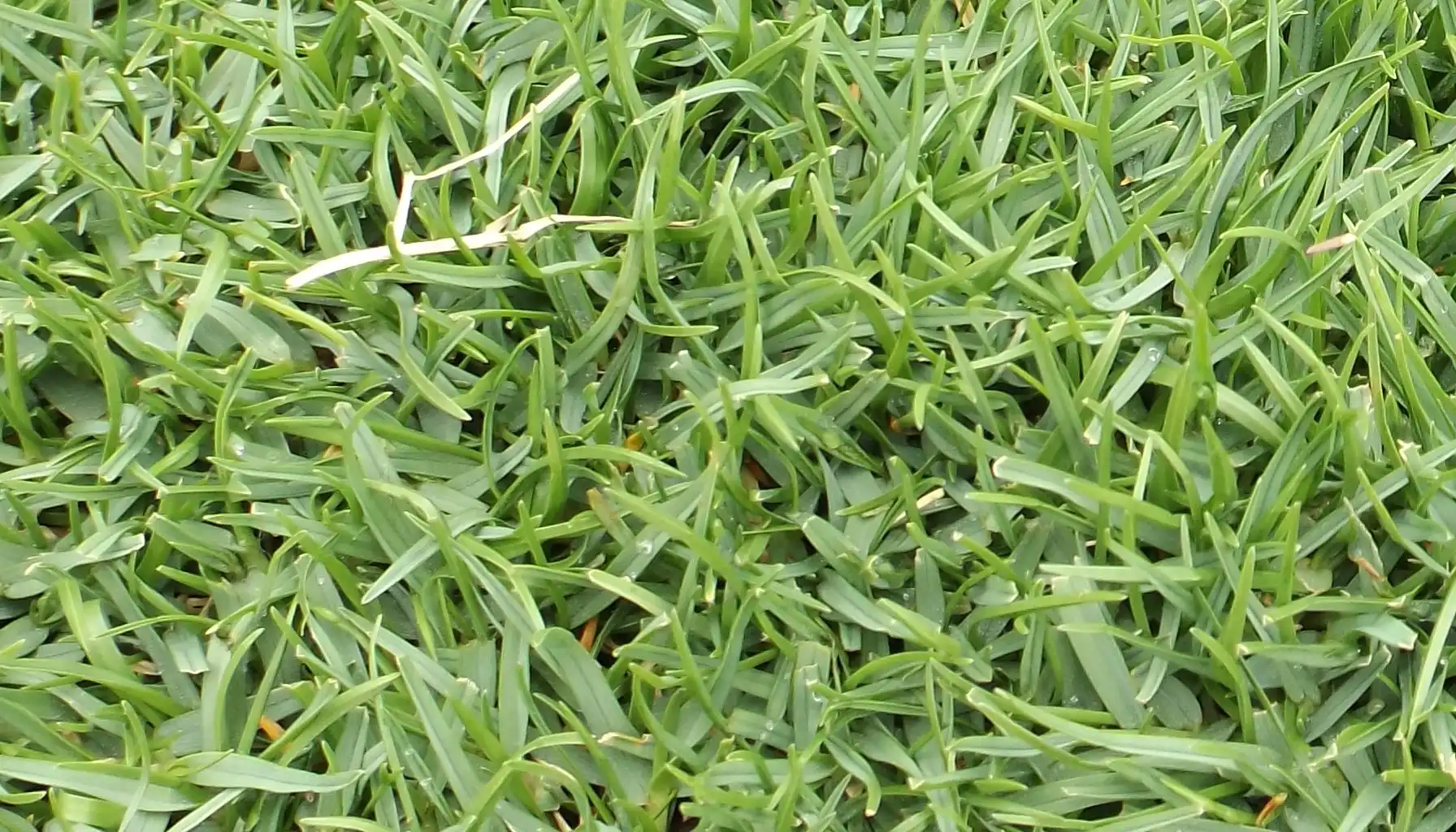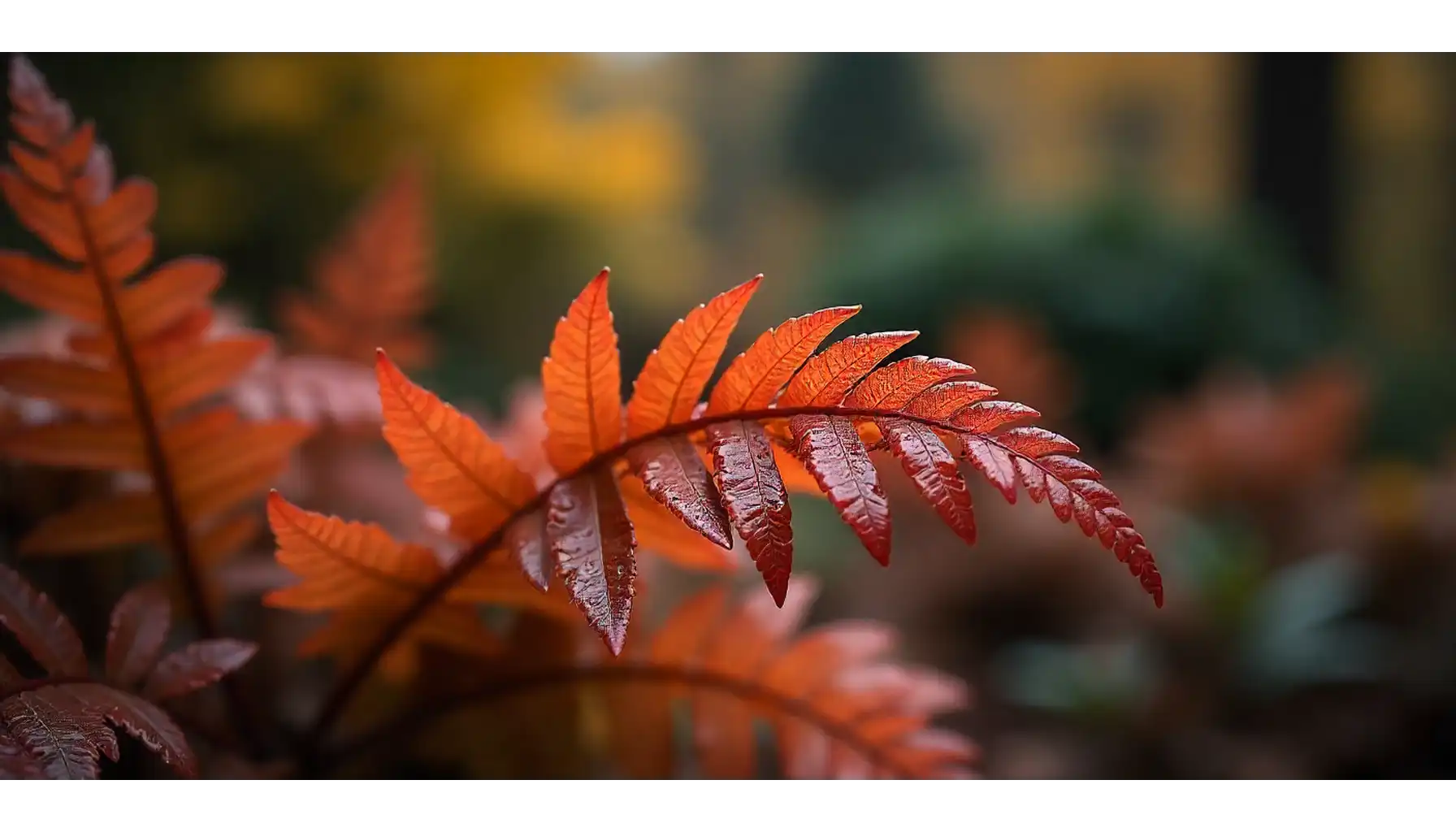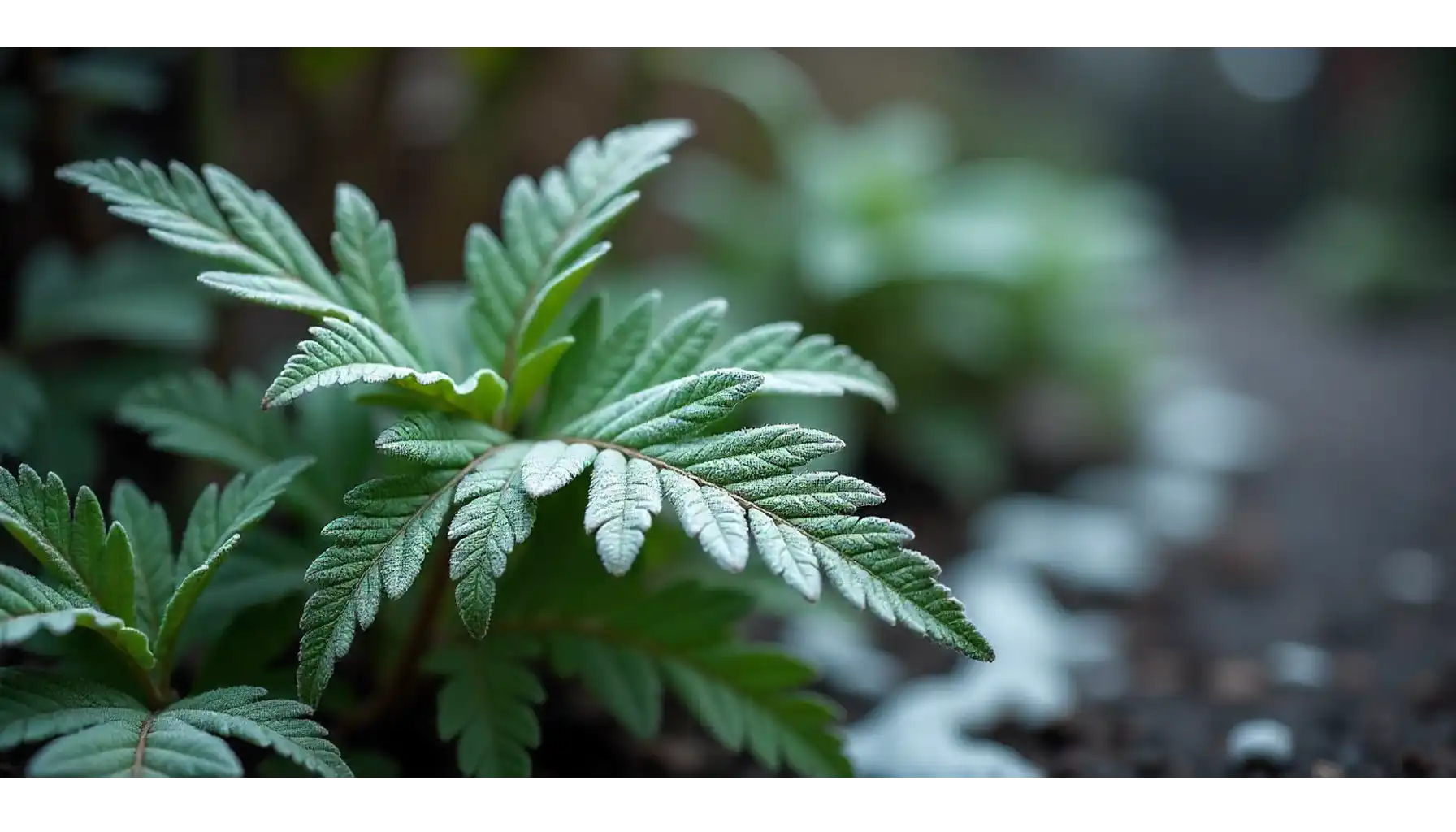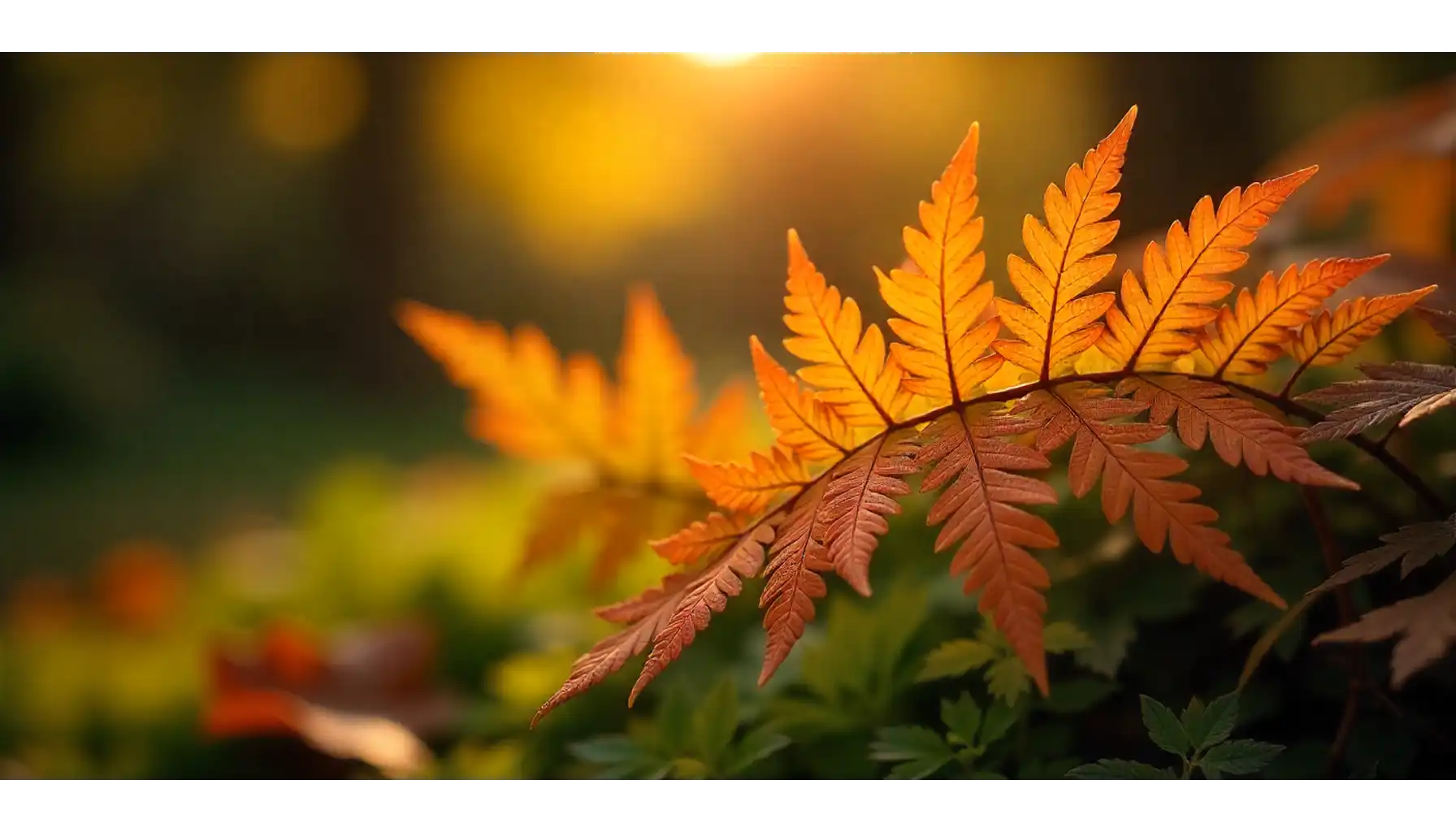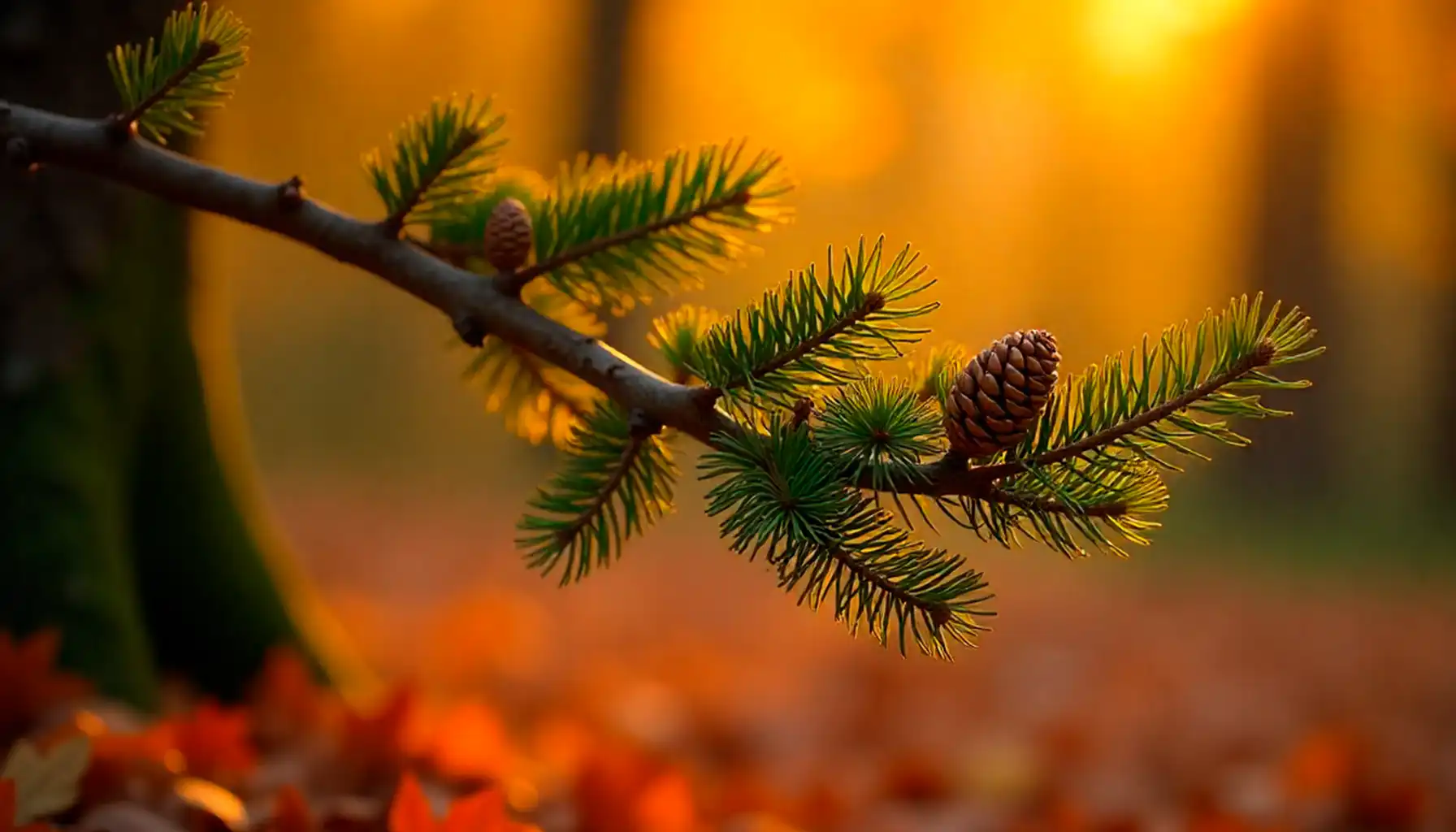The Autumn Fern (Dryopteris erythrosora) attracts with its copper-red and bright orange-yellow leaves. This plant adapts to many weather conditions and decorates shady gardens at any time of the year. It is suitable for small places, because of its compact size. To find the perfect spot to grow Autumn Fern – use the plant identifier.
Plant ID
The botanical name of the plant is Dryopteris erythrosora. It belongs to the family Dryopteridaceae and grows naturally in East Asia, mainly in Japan. Finally, after 5 years Autumn Fern size reaches about 2 feet. In its native range, it thrives in forest understories where moisture and filtered light remain constant. The plant color changes from vibrant red to coppery-pink. Croziers unroll into orange honey-green fleshy fronds which mature to a rich leathery green.
Feature | Comment |
Autumn Fern Scientific Name | Dryopteris erythrosora Brilliance |
Family | Aspleniaceae |
Growth Rate | Moderate |
Zones | 5-9 USDA |
Type | Perennial, herbaceous |
Mature Height | 12-24" tall |
Mature Spread | 18-30" wide |
Autumn Fern Native Range | East Asia |
Appearance: From Spring to Winter
Young fronds of the Autumn Fern plant open in copper, bronze, or rose tones. As the season progresses, the fronds turn deep green. This color shift gives the plant effect that inspired many gardeners and sellers for trade names, such as Brilliant Autumn Fern.
The plant forms a symmetrical mound with arching fronds. Mature fronds reach about 12–24 inches in height, depending on the soil and moisture.
The Autumn Fern Brilliance in landscape design because the plant keeps its foliage through winter in mild climates.
Season | Frond Color | Landscape View |
Spring | Copper or bronze new growth | Contrast with green plants |
Summer | Glossy green mature fronds | Lush texture in shade |
Fall | Deep green to bronze tones | Warm seasonal tone |
Winter | Green (evergreen in mild regions) | Ground cover and structure |
How to Nurture Healthy Growth
The Dryopteris erythrosora Autumn Fern Dryopteris erythrosora grows best in partial to full shade. It tolerates filtered sunlight but suffers under direct afternoon sun. The plant prefers rich, moist, well-drained soil with high organic content. Gardeners often mix compost or leaf mold into the planting area.
Moisture remains vital for healthy growth. The plant does not tolerate long dry periods. Regular watering keeps fronds strong and glossy. Mulching helps preserve soil moisture and reduces weed competition.
In regions with hot summers, such as Autumn Fern Texas landscapes, the plant benefits from morning sun and afternoon shade. The Autumn Fern cold hardiness extends to USDA Zone 5 when protected with mulch in winter.
Planting & Spacing
Proper spacing supports airflow and reduces fungal issues. Place each Brilliance Autumn Fern plant about 18 to 30 inches apart. This spacing allows the fronds to expand naturally.
Planting Time | Spring or early fall |
Spacing | 18-30 inches |
Soil pH | Slightly acidic, pH level 5.0-6.0 |
Watering | Regular, keep evenly moist |
Mulch | 2–3 inches of organic matter |
Indoor & Outdoor Plant Harmony
The Autumn Fern care indoors follows the same principles as outdoor care. Use a pot with drainage holes and a peat-based soil mix. Keep humidity high and avoid direct sun exposure. Mist the fronds during dry indoor conditions. Maintain moderate temperature levels between 60–75°F (16–24°C).
Winter Vitality: Year-Round Interest
Is Autumn Fern evergreen? The answer depends on climate. In mild regions, such as zone 8 or 9, it acts as an evergreen. In colder zones, it may lose fronds after frost but produce new ones in spring. Even when fronds die back, the rootstock remains alive underground.
The Autumn Fern in winter or Autumn Brilliance Fern in winter still provides interest due to its texture and color. Gardeners often pair it with Autumn Fern companion plants such as hellebores, hostas, and heucheras, which share similar moisture and shade preferences.
Fertilization and Maintenance
Feed it once in spring using a slow-release, balanced fertilizer. Over-fertilization reduces the color intensity of new fronds. Remove dead or damaged fronds at the base to encourage new growth. This maintenance keeps the mound tidy and prevents disease buildup.
Problems & Solutions Table
Problem | Cause | Solution |
Slow Growth | Nutrient deficiency | Apply a balanced, slow-release fertilizer in spring |
Fronds collapse or rot at the base | Fungal infection from overwatering | Remove infected parts and ensure proper drainage |
Fronds lose gloss and texture | Direct exposure to strong sun | Provide partial shade and maintain consistent soil moisture |
Pale or weak new fronds | Poor soil nutrients or old fronds blocking light | Prune old growth and enrich soil with compost |
Fronds turn brown and dry | Soil lacks moisture or air becomes too dry | Water the plant regularly and apply mulch to retain soil moisture |
Pests | The Dryopteris Autumn Fern resists most pests. Slugs and snails may damage young fronds in wet conditions. | Use organic slug control methods or hand removal. Fungal leaf spots appear under poor air circulation. Proper spacing and moderate watering prevent most issues. |
Toxicity | Pets eat plants | Homeowners worry about one thing. Is autumn fern toxic to cats? According to current data, Dryopteris erythrosora shows no confirmed toxicity to cats or dogs. However, ingestion of any non-food plant may cause mild stomach upset. Always monitor pets near garden plants. |
Benefits Table
Regional Adaptation | The plant adapts to many regions, from the Pacific Northwest to the southeastern United States. In Fern Brilliance Autumn Texas landscapes provide extra shade and irrigation during hot months. In northern areas, apply mulch in late autumn to protect the crown. The Autumn Fern height remains consistent under proper moisture and protection. |
Landscape Design Uses | The Autumn Fern in landscape brings color and texture to shaded beds, woodland borders, and foundation plantings. Its evergreen habit enhances visual interest through every season. In mass plantings, the Autumn Fern spacing rule ensures dense coverage without overcrowding. |
Companions | Designers use the Fern Autumn Brilliance variety to complement flowering shrubs or perennials. The plant pairs well with Hydrangeas, Azaleas, and Astilbes, as well as others like Athyrium niponicum or Polystichum setiferum. |
How to Distinguish Autumn Fern Dryopetis Erythrorosa
The contrast between young and old foliage creates a two-tone effect that most plants lack. Its fronds form even, arching shapes with firm, leathery leaflets that catch light more strongly than the soft texture of other species.
Unlike many species with uniform green foliage, Dryopteris erythrosora often retains evergreen foliage in mild climates, visible as dense green clusters during winter.
The spore pattern on the underside forms neat orange-brown sori arranged in regular rows, another useful diagnostic feature.
In Autumn Fern plant photo, a well-formed rosette shape, firm texture, and warm bronze tones in new growth reliably indicate the plant, distinguishing it from similar genera such as Athyrium, Polystichum, or Dryopteris filix-mas.
Related AI Plant Finder Posts
